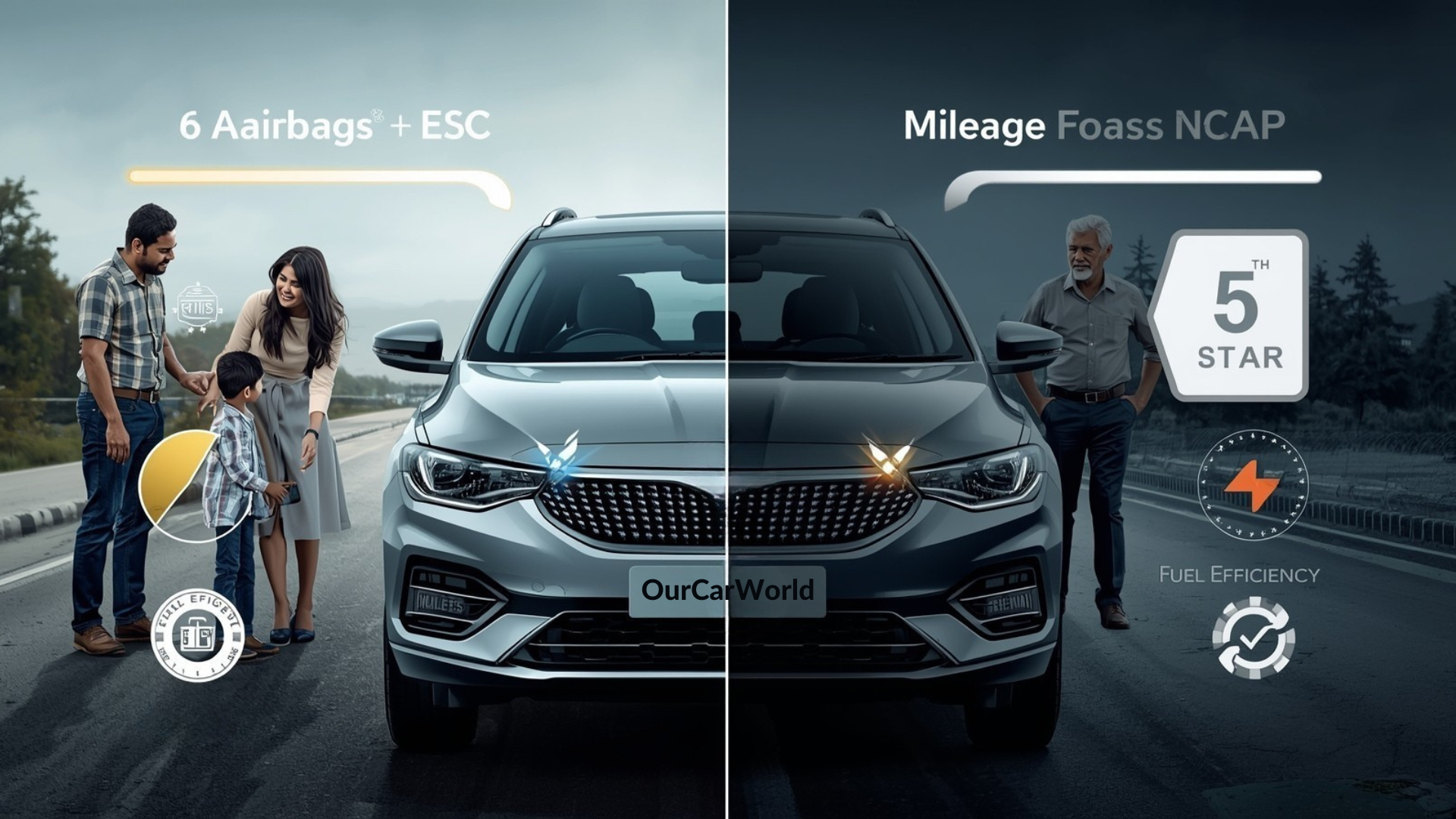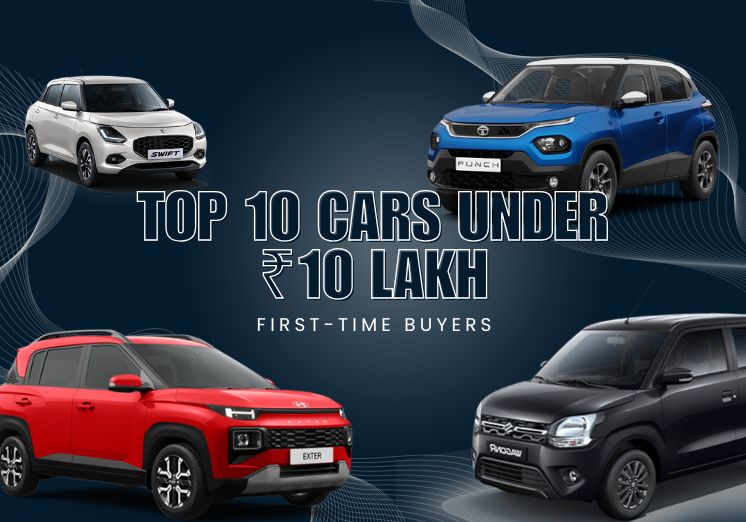For decades, Indian buyers were obsessed with one thing: mileage.
“Kitna deti hai?” wasn’t just a question – it was the national slogan of car buying.
But that mindset is collapsing.
Today, more Indians are walking into showrooms and asking:
- “How many airbags does it have?”
- “Is it a 5-star NCAP car?”
- “Does it come with ESC?”
- “Is ADAS available?”
This shift is not accidental. It’s a result of rising awareness, stricter regulations, new Bharat NCAP ratings, better infrastructure, and increasing disposable incomes. Safety is no longer a luxury – it’s a deciding factor.
Let’s dig deeper into why India, traditionally a mileage-driven market, is now prioritizing safety like never before.
1. Accident Awareness Has Exploded – Thanks to Social Media & Transparency
The biggest trigger behind this shift?
Public awareness.
India records over 1.6 lakh road accident deaths every year (Ministry of Road Transport & Highways). These numbers are no longer hidden in newspaper footers – they’re trending on social media.
- Viral crash videos
- CCTV accident clips
- Breakdown of car safety structures
- Crash test analysis by creators like Nikhil Rana
- Reels showing how airbags save lives
People are finally realizing the difference between a stable structure and a tin can on wheels.
Govt Data: https://morth.nic.in/road-accident-in-india
10 Car Safety Features Indian Drivers Should Know
This public awareness has changed the buyer mindset faster than any ad campaign ever could.
2. Bharat NCAP: India Finally Got Its Own Crash Testing Authority
The introduction of Bharat NCAP in 2023 changed the game.
Cars crash-tested on Indian roads, with Indian rules, for Indian consumers = massive credibility.
People now actively search:
- “Bharat NCAP rating of Brezza”
- “Punch or Fronx safety rating?”
- “Which cars are 5-star in India?”
And here’s the truth:
Manufacturers can no longer hide behind marketing lines like “strong body shell” or “improved structure”. The ratings are public and transparent.
This shift forced buyers to think beyond mileage, because now safety could be measured and compared.
3. Government Regulations Are Becoming Stricter – Whether Buyers Like It or Not
Indian regulations have stepped up big time:
- ABS – Mandatory
- Rear parking sensors – Mandatory
- Speed alert – Mandatory
- Driver + passenger airbags – Mandatory
- 6 airbags – Expected to be standardized across segments
- Stricter crash norms for body structure
These rules automatically push cars toward becoming safer.
Mileage may save money.
But regulations now push consumers toward safer options – even if they cost slightly more.
4. The Expressway Boom: Higher Speeds = Higher Safety Expectations
India’s highway network is expanding aggressively:
- Delhi–Mumbai Expressway
- Purvanchal Expressway
- Bangalore–Mysore Expressway
- Chennai–Bangalore Expressway
- Atal Setu Trans Harbour Link (Mumbai)
High-speed roads demand high-safety vehicles.
Families know this – and they aren’t risking their lives in cars with weak structures or outdated safety tech.
People know the bitter truth now: Mileage won’t save your family during a crash at 100 km/h – structural integrity will.
5. Manufacturers Like Tata & Mahindra Forced the Market to Evolve
Tata and Mahindra punched the entire industry in the gut – in a good way.
They changed the game with:
- Nexon – First Indian car with 5-star rating
- Punch – 5-star safety became a selling point
- XUV700 – Offered ADAS at an aggressive price
- Scorpio-N – Built like a tank
This forced competitors – especially Maruti, Hyundai, and Kia – to offer:
- More airbags
- Better structure
- Standard ESC
- Improved braking tech
Even the biggest brands realized: India is no longer going to accept unsafe cars silently.
6. ADAS and New-Gen Safety Tech Became Surprisingly Affordable
ADAS used to be a ₹20–25 lakh car feature.
Now it’s appearing in:
- Tata Nexon
- XUV 3XO
- MG Astor
- Hyundai Verna
- Honda Elevate
With features like:
- Auto Emergency Braking
- Lane Departure Warning
- Adaptive Cruise Control
- Blind Spot Detection
- Forward Collision Warning
People started seeing safety as advanced tech, not boring old-school features.
They want more.
And they expect it even in mid-budget cars.
7. Gen-Z Buyers Don’t Think Like the Old “Mileage First” Generation
Here’s the uncomfortable truth older buyers hate:
Young buyers don’t care about mileage the way their parents did.
Gen-Z and young professionals value:
- Tech
- Safety
- Ratings
- Build quality
- Design
- Convenience
Mileage is still relevant – but not the “kingmaker” anymore.
They’d rather buy a 4-star safe car giving 16 km/l than a 0-star car giving 21 km/l.
This generation is driving the shift.
8. High Fuel Prices Pushed People Toward Petrol Turbo, EVs & Hybrids – Not Mileage-Only Cars
High fuel cost didn’t increase mileage obsession – it pushed people to better powertrains:
- EVs
- Strong hybrids
- Turbo engines with higher efficiency
- Idle start-stop systems
- Smart energy recovery tech
When buyers are already paying more for tech, they expect safety along with it.
Even Maruti, the mileage king, now pushes:
- Hybrids
- ESP
- 6 airbags
- Better structure across Nexa models
The market is evolving because powertrains evolved.
9. Rising Income + EMI Comfort = Buyers Choosing Higher Variants
People aren’t choosing base variants as much as before.
They prefer mid and top variants because:
- Higher EMI isn’t a big burden
- Value-per-rupee matters
- Higher variants offer safety features
- Top variants improve resale value
This directly shifts the focus from mileage to:
- Safety
- Features
- Tech
- Comfort
Also read:- Car Buying Guide 2025 (India) – Find the Right Car with Confidence
10. Insurance Companies Favor Safer Cars – Lower Premiums, Better IDV
Insurance companies literally price safer cars lower because:
- They have fewer severe accidents
- Claim amount is lower
- Fatality risk is reduced
That means safer cars cost less to insure.
People compare long-term cost, not just fuel efficiency.
A 5-star car with slightly lower mileage often ends up cheaper to own over 7–10 years.
Quick Comparison Table: Mileage vs Safety Priorities in 2025
| Buyer Type | Earlier Priority | Current Priority | Why the Shift |
|---|---|---|---|
| First-time | Lowest fuel cost | 6 airbags, stability | Fear of unsafe cars |
| Family | Resale value | Body strength | Kids’ safety priority |
| Highway driver | Efficiency | Lane assist, ESC | High-speed risk |
| City user | Compact + cheap | Crash-tested car | Frequent accidents |
| Tech buyer | Looks | ADAS | Affordable tech |
Conclusion: Indians Finally Realize Safety Saves Lives, Not Mileage
India is slowly – but finally – becoming a safety-conscious market.
Mileage still matters (obviously).
Petrol prices aren’t disappearing anytime soon.
But consumers now realize:
- Mileage saves money
- Safety saves lives
- And a safe car today prevents unimaginable losses tomorrow
This shift will only accelerate as more 5-star cars, Bharat NCAP ratings, and affordable ADAS options flood the market.
The old era of “kitna deti hai” is fading.
The new era is here: “Kitna safe hai?”



